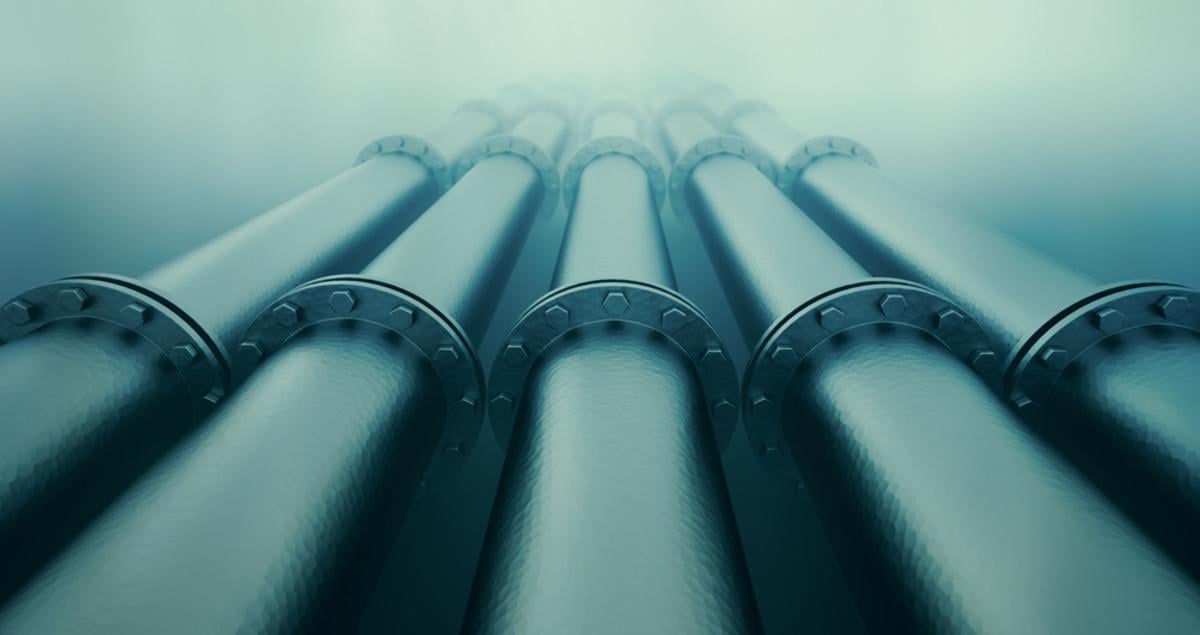Putting disused pipelines and fuel stations back to work

Producing, storing and transporting energy requires a lot of infrastructure, but what happens to legacy pipelines, fuel stations and power plants when the sector transitions to cleaner energy?
In the US, President Biden’s Inflation Reduction Act (IRA) brought with it the US Energy Infrastructure Reinvestment program (EIR). It offers $250 billion in loan guarantees to “retool, repurpose or replace energy infrastructure”, helping to “avoid, reduce, utilize, or sequester air pollutants or anthropogenic emissions of greenhouse gases”.
The business case for repurposing energy assets
A rapidly changing energy landscape means today’s utilities, pipelines and power networks could become tomorrow’s stranded assets, at risk of write-downs, devaluations or conversion to liabilities.
Repurposing existing assets means they can retain their value and new infrastructure doesn’t need to be built, saving money, time and effort. In addition, communities dependent on fossil fuel infrastructure can safeguard jobs and their local economies.
Here’s how the legislation could help energy companies reimagine legacy infrastructure to embrace the energy transition.

Replacing coal with nuclear power
The resurgence in nuclear power as a sustainable fuel has led to a number of projects utilizing now-closed coal-fired power plants to build small modular reactors (SMR).
More than 80 commercial SMR designs are being developed around the world, according to the International Atomic Energy Agency, with Romania and the US advancing plans for repurposing fossil-fuel plants with SMR projects. In the case of the US, such initiatives could receive EIR funding guarantees.
As their name suggests, SMRs are small so can be located at existing power plants or coal mine sites, and their prefabricated modular manufacture makes shipping and installation cost-effective, fast and straightforward, unlike giant bespoke nuclear facilities.
Many of the plant systems used in coal-fired power plants can be repurposed for use with an SMR, including water, desalination and wastewater treatment systems, mobile lifting equipment and cooling towers.
Retrofitting gas pipeline networks
Other potential projects that could receive EIR funding include retrofitting existing pipelines designed for natural gas into a network suitable to carry more sustainable fuels like clean hydrogen or synthetic electrofuels.
Existing pipeline networks could also be retrofitted to transport CO₂ captured from industrial flue gases, using carbon capture, utilization and storage (CCUS) technologies.
However, repurposing pipelines isn’t a simple process. Hydrogen molecules are much smaller than methane – the key component of natural gas — so are more likely to leak through network valves and seals, for example. Unlike natural gas, hydrogen molecules can squeeze into miniscule spaces in steel pipes, making the metal more likely to crack or corrode.
Natural gas pipelines would, therefore, need to be treated or coated to make them ready to carry other gases.

Turning gas stations into refueling centers
As more car owners switch to electric options and transport operators seek more sustainable fuels, traditional refueling stops will quickly need to adapt to greener options.
Increasingly, roadside gas stations will need to be equipped with EV recharging facilities and a mix of sustainable fuels in place of petrol and diesel, such as clean hydrogen or synthetic electrofuels for heavy transport.
Adopting hydrogen as a fuel at scale will require a simultaneous increase in hydrogen-fueled vehicles, clean hydrogen gas supply and enough hydrogen fueling stations on routes.
EIR loan guarantees provide an opportunity for the energy industry to both look back and move forward. Maximizing the hidden potential of the fossil fuel era’s overlooked infrastructure could turn a liability into an asset.
![]()
Discover more about MHI’s 90 MPa Class Liquid Hydrogen (LH2) Pump





